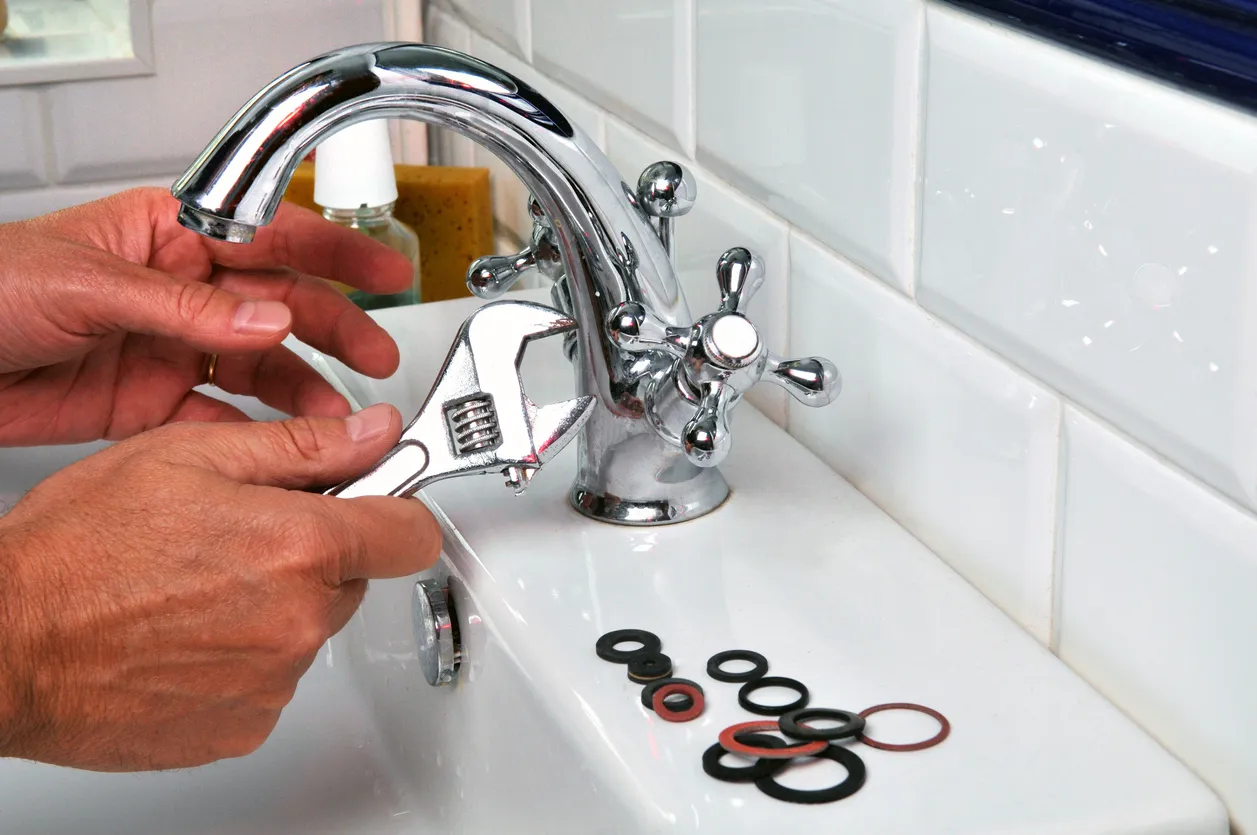What It's Required to Fix a Faulty Faucet
What It's Required to Fix a Faulty Faucet
Blog Article
The article down below about Water Dripping from Faucet: Why and How to Fix is fairly stimulating. Read it for your own benefit and see what you think about it.

Trickling faucets might feel like a minor aggravation, but their effect surpasses simply the inconvenience of the noise. From wasting water to incurring unnecessary monetary prices and wellness threats, ignoring a dripping faucet can result in different effects. In this write-up, we'll look into why it's crucial to resolve this common household issue promptly and effectively.
Wastage of Water
Ecological Influence
Leaking taps add substantially to water waste. According to the Environmental Protection Agency (EPA), a solitary faucet dripping at one drip per secondly can lose more than 3,000 gallons of water each year. This not just pressures water resources but additionally affects communities and wild animals based on them.
Step-by-Step Overview to Dealing With a Dripping Faucet
Tools Needed
Before trying to repair a trickling tap, collect the necessary devices, including an adjustable wrench, screwdrivers, replacement parts (such as washers or cartridges), and plumber's tape.
Typical Tap Issues and Their Solutions
Determine the sort of tap and the certain concern creating the drip. Common troubles consist of damaged washing machines, rusty valve seats, or faulty O-rings. Describe producer guidelines or on the internet tutorials for step-by-step advice on repair services.
Financial Costs
Boosted Water Bills
Beyond the ecological impact, leaking taps can inflate water expenses considerably. The built up wastefulness gradually converts into higher utility costs, which might have been stayed clear of with prompt repair services.
Possible Home Damages
Additionally, long term trickling can bring about damage to fixtures and surfaces bordering the tap. Water buildup can trigger staining, rust, and even structural concerns if left ignored, causing additional fixing costs.
Health and wellness Issues
Mold And Mildew and Mildew Growth
The consistent presence of moisture from a leaking tap produces an ideal environment for mold and mold development. These fungis not only compromise interior air top quality but also position health and wellness dangers, especially for people with respiratory conditions or allergic reactions.
Waterborne Diseases
Stationary water in trickling taps can come to be a breeding place for bacteria and various other pathogens, boosting the danger of waterborne illness. Pollutants such as Legionella microorganisms flourish in stagnant water, potentially bring about serious diseases when ingested or breathed in.
Do it yourself vs. Professional Fixing
Benefits and drawbacks of Do It Yourself Fixing
While some might attempt to take care of a leaking faucet themselves, DIY repair services feature their own set of obstacles. Without correct understanding and tools, do it yourself attempts can exacerbate the concern or cause incomplete fixings, prolonging the issue.
Advantages of Hiring a Specialist Plumber
Employing a specialist plumber guarantees that the underlying cause of the trickling faucet is addressed successfully. Plumbings have the proficiency and devices to identify and fix tap concerns efficiently, saving time and lessening the threat of more damage.
Ecological Duty
Individual Contribution to Conservation
Taking responsibility for repairing leaking taps straightens with more comprehensive initiatives towards water preservation and environmental sustainability. Every individual's actions collectively make a significant influence on maintaining priceless resources.
Sustainable Living Practices
By prioritizing prompt repairs and taking on water-saving habits, people contribute to lasting living methods that benefit both existing and future generations.
Preventive Measures
Normal Upkeep Tips
To avoid trickling faucets, do routine upkeep such as cleaning up aerators, evaluating for leaks, and changing worn-out components quickly. In addition, consider setting up water-saving tools or updating to much more effective components.
Importance of Prompt Services
Dealing with trickling taps as soon as they're noticed avoids additional water wastefulness and possible damages, eventually saving both water and cash in the long run.
Impact on Residential Or Commercial Property Worth
Assumption of Well-Maintained Home
Preserving a residential property in good condition, consisting of resolving maintenance concerns like leaking taps, improves its viewed worth and charm among potential customers or occupants.
Influence on Resale Value
Characteristics with well-maintained plumbing components, including taps, command higher resale worths in the realty market. Dealing with trickling faucets can add to a positive impact during home evaluations and arrangements.
Conclusion
Attending to a dripping faucet exceeds plain benefit; it's an important action toward conserving water, minimizing economic prices, and safeguarding wellness and residential or commercial property. Whether with do it yourself repair services or specialist aid, doing something about it to fix trickling faucets is a small yet impactful way to promote liable stewardship of sources and add to a much healthier, much more lasting future.
How to Fix a Dripping or Leaky Faucet
A leaking faucet is one of the most common problems that homeowners encounter, but it being commonplace doesn’t make it any less annoying. The constant drip drip drip of a leaking bathtub faucet, showerhead, or sink tap can disturb your home’s serenity. Left neglected, a dripping faucet can also result in higher water bills and discoloration or mold growth in your sink or plumbing fixtures.
Fortunately, you don’t have to be a trained plumber to know how to stop a dripping faucet. With some basic tools, replacement parts, and a little patience, leaky faucet repair is a breeze. In this article, we’ll explain what causes dripping faucets and how you can fix them.
What Causes a Leaking Faucet?
Kitchen and bathroom faucets come in all manner of designs, but most involve some combination of valves, O-rings, seals, and washers. The O-ring is usually the weakest link, but any one of these pieces can wear down over time. Heat, moisture, temperature fluctuations, minerals, mold, and movement can contribute to warping and corrosion, breaking the watertight seal. This just comes with the territory of being a homeowner. Everything is always subject to wear and tear, and some component parts of your appliances and fixtures need to be replaced on occasion. At least replacement O-rings are cheap!
More rarely, dripping faucets can be a symptom of excessively high water pressure. Were this the case in your home, you would probably notice that the leak is not isolated to one faucet. Water pressure issues are harder to resolve on your own. We recommend contacting a professional plumber if you suspect your water pressure is too high.
How to Fix a Dripping Faucet
Pipe wrench or monkey wrench Allen wrench set Screwdrivers Old towel or rag Shut off the water.
Before you do anything, you need to turn off the water to keep from drenching your kitchen or bathroom. You should find a valve under the sink and against the wall. Once you’ve turned this valve, try turning the faucet on to confirm that the water source has been cut off.
If you can’t locate your local valve for the faucet you’re working on, you can always shut off the water to the house at the main valve. Of course, this will prohibit anyone from using the sinks, showers, or toilets while you’re working on the faucet that’s giving you trouble.
Plug or block the drain.
You’ll be disassembling the faucet and removing some small bits of hardware. Plug the drain with a stopper or rag to avoid the possibility of a small screw falling into your P-trap.
Take apart the faucet assembly.
There are several varieties of kitchen and bathroom faucets, each with its own manner of assembly. For detailed instructions on how to disassemble your faucet, you can refer to the fixture’s manual or contact the manufacturer. If you know whether you have a ball, disc, cartridge, or compression faucet, you can find detailed schematics online.
In general, you need to begin by removing the faucet handles. You might notice a small screw that you’ll need to remove with a screwdriver or Allen wrench. If you don’t see any visible securing hardware, it’s likely hidden under a decorative cap that can be unscrewed or popped off with flathead screwdriver.
Remove each piece methodically, consulting a schematic when necessary. Take notes or arrange the pieces in such a way to make it easier to correctly reassemble the faucet later.
Remove the cartridge.
Once you’ve removed the handles and securing hardware, you should be able to remove the valve cartridge or stem. Some cartridges will slide right out. Other faucet models will require you to loosen a nut with a pipe wrench before you can remove the valve stem.
Examine the exposed hardware.
With the cartridge or stem removed, inspect the component parts. Check the rubber O-rings for wear and tear. Also examine the seat washer for corrosion or other damage. These pieces are usually the responsible parties for a dripping faucet, but it’s worth inspecting the other component parts while you have the faucet disassembled.
Find replacement parts.
Once you’ve identified which faucet component has failed, find an identical replacement. Your local hardware store should have O-rings, seat washers, and other standard components in stock. If you have a luxury or uncommon faucet, you may have to contact the manufacturer for a replacement part.
It’s a good idea to take your old parts with you to the hardware store so you can compare them with the store’s inventory and be sure you’re purchasing the correct replacement.
Reassemble the faucet.
With your new parts in hand, reconstruct the faucet and handles. Don’t be tempted to overtighten screws or nuts. You might think this could create a better seal, but it can instead damage or bend a delicate part of the assembly and create a new problem for you.
Turn on the water and test the faucet.
The only thing left to do is test your work. Unplug the sink, turn the water back on, and try the faucet. Congratulate yourself on a job well done!
https://www.libertyhomeguard.com/how-to-fix-a-dripping-or-leaky-faucet/

We are very enthusiastic about Why It's Important to Fix Leaky Faucets and I am hoping you appreciated the new article. Appreciated our article? Please quickly share it. Help other people check it out. Thanks for your time spent reading it.
Report this page